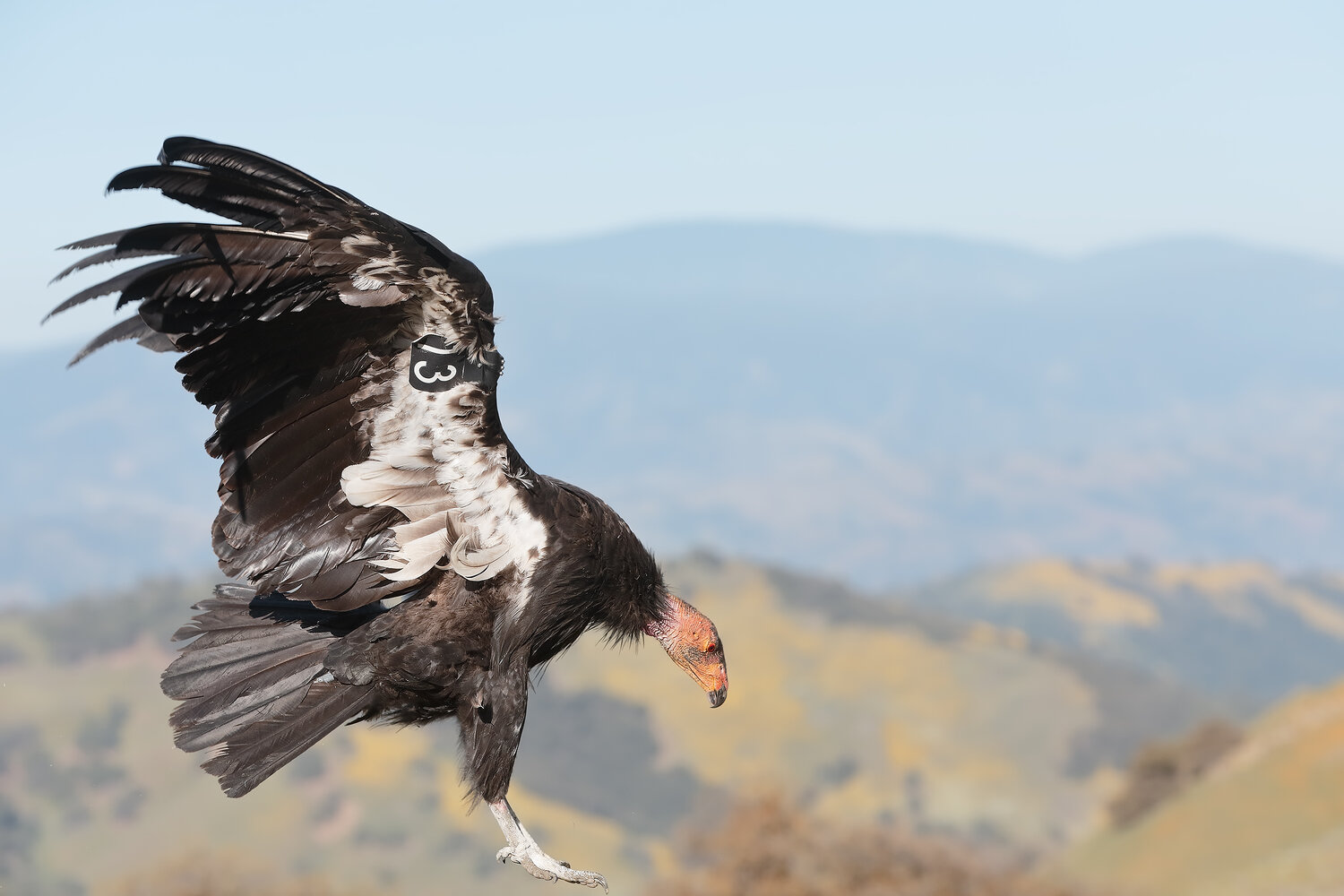Bird of the Month: California Condor
By Andy McCormick
PC: Loi Nguyen/Audubon Photography Awards (California Condor)
Scientific Name: Gymnogyps californianus
Length 46 in
Wingspan 109 in
Weight 23 lb (10.4 kg)
AOU Band code CALC
The black speck was far out on the horizon but through binoculars I was able to see that it was a California Condor moving in our direction as we stood on the South Rim of the Grand Canyon. In a matter of seconds it approached us at a speed of nearly fifty miles per hour without flapping its wings. Riding the wave of the thermal coming up from the hotter air deep in the canyon the condor suddenly arrived in full view above us and then banked to slow enough to make three circles over the gathering crowd. Its wing tag identified Condor 187, a nine-year-old male that was born in the captive breeding program begun in 1987. He settled down and perched on a triangular shaped ledge just below the Lookout Studio to the delight of adults and children. Its bright pink crop protruding through its chest feathers attested to its having eaten a recent meal. How amazing for so many people to see such a rare bird so close to them!
And rare it is. To save them from extinction the last 22 condors were captured and even then several of them died in captivity. All of the California Condors alive today are descendents of 14 captive condors and have been raised at the World Center for Birds of Prey. The birds are released into the wild by The Peregrine Fund with the cooperation of US Fish & Wildlife, US Forest Service, and Grand Canyon NP. There are now over 400 California Condors in the United States, but they are still threatened and dying from lead poisoning from bullet fragments in hunter’s gut piles and blockage of their digestive tracts by human garbage such as coins, bottle caps and other items which get caught in their crop.
The California Condor is our largest land bird and is “superbly adapted for soaring flight” (Osborn). They are wide ranging and can fly 250 miles in a day. They have extremely keen vision and search for food by sight, often following the lead of ravens which have found a recently dead animal.
The California Condor is a vulture in the genus Gymnogyps, naked vulture, from the Greek gumnos, naked, unclad, and gyps, a vulture. The reference is to its featherless head which makes eating carrion easier and, if it can be, more sanitary. Condors are very fastidious about cleanliness and will often wash in water after feeding. Condor is from the Spanish condor, in turn from the Quechuan (Andes) word cuntur, the name for this type of bird (Holloway).
The Grand Canyon offers ideal habitat of cliffs and caves where the condor lays its single egg directly on the rock, which has been cleaned by one of the adults brushing with its head to smooth the area (Osborn). The parents share incubation which lasts almost two months with the pair taking shifts of 1-4 days. The young are capable of flight about 5-6 months after hatching, and may stay dependent on the adults for another six months (Kaufman). Condors typically breed once every two years.
After resting condor 187 flew back across the canyon. In a few seconds it flexed its wings downward which caused it to lose altitude. Successive drops brought it deep into the canyon and it was soon out of sight around an outcropping.


